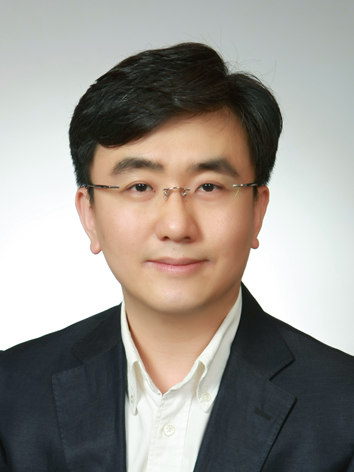Choi+Chul+Hee
-
 Professor Choi Chul Hui appointed as editor-in-chief of Nanobiosensors in a disease diagnosis magazine
Professor Choi Chul Hui of the Department of Biological and Brain Engineering has been appointed the editor-in-chief of Nanobiosensors, an international medical magazine that concentrates on disease diagnosis.
As the editor-in-chief, Professor Choi will be involved in dissertation evaluations and overall direction of the magazine.
Professor Choi is one of the leading authorities in the field of clinical medicine and has published 60 SCI level dissertations in the fields of cell biology, computational biology, and bio-optics.
He is also the executive director of the KAIST BioImaging Research Center, and his research lab focuses on cell signals and bio imaging. Professor Choi is researching the generation process of degenerative diseases like arteriosclerosis by taking a multidisciplinary approach.
Professor Choi has recently developed a new bio imaging technique that allows for the measurement of perfusion and a new technology for the drug delivery to nerves using ultra short wavelength laser beams.
2011.10.10 View 11791
Professor Choi Chul Hui appointed as editor-in-chief of Nanobiosensors in a disease diagnosis magazine
Professor Choi Chul Hui of the Department of Biological and Brain Engineering has been appointed the editor-in-chief of Nanobiosensors, an international medical magazine that concentrates on disease diagnosis.
As the editor-in-chief, Professor Choi will be involved in dissertation evaluations and overall direction of the magazine.
Professor Choi is one of the leading authorities in the field of clinical medicine and has published 60 SCI level dissertations in the fields of cell biology, computational biology, and bio-optics.
He is also the executive director of the KAIST BioImaging Research Center, and his research lab focuses on cell signals and bio imaging. Professor Choi is researching the generation process of degenerative diseases like arteriosclerosis by taking a multidisciplinary approach.
Professor Choi has recently developed a new bio imaging technique that allows for the measurement of perfusion and a new technology for the drug delivery to nerves using ultra short wavelength laser beams.
2011.10.10 View 11791 -
 Using Light to Deliver Drugs to the Brain
The cerebral blood vessels have a unique blood-brain barrier. Using this unique structure, Professor Choi Chul Hee (Department of Bio-Brain Engineering) developed a technique to deliver drugs safely to the brain using lasers to alter the diffusivity of the blood-brain barrier.
The blood-brain barrier allows the entry of only those drugs related to metabolic functions which made the entry of other drugs difficult.
Due to this property it was difficult to administer the drug to a patient and have it affect the patient. Therefore the question was is it possible to maintain the effectiveness of the drug and allow it to pass through the barrier?
The conventional method was to actually alter the structure of the drug or drill of small hole in the head and administering the drug directly, but these methods proved to be high risk and expensive.
Professor Choi’s team used an ultra-short frequency laser beam on the barrier for 1/1000th of a second on the barrier to temporarily inhibit its function thereby allowing the drug to enter the brain safely.
2011.06.20 View 10535
Using Light to Deliver Drugs to the Brain
The cerebral blood vessels have a unique blood-brain barrier. Using this unique structure, Professor Choi Chul Hee (Department of Bio-Brain Engineering) developed a technique to deliver drugs safely to the brain using lasers to alter the diffusivity of the blood-brain barrier.
The blood-brain barrier allows the entry of only those drugs related to metabolic functions which made the entry of other drugs difficult.
Due to this property it was difficult to administer the drug to a patient and have it affect the patient. Therefore the question was is it possible to maintain the effectiveness of the drug and allow it to pass through the barrier?
The conventional method was to actually alter the structure of the drug or drill of small hole in the head and administering the drug directly, but these methods proved to be high risk and expensive.
Professor Choi’s team used an ultra-short frequency laser beam on the barrier for 1/1000th of a second on the barrier to temporarily inhibit its function thereby allowing the drug to enter the brain safely.
2011.06.20 View 10535